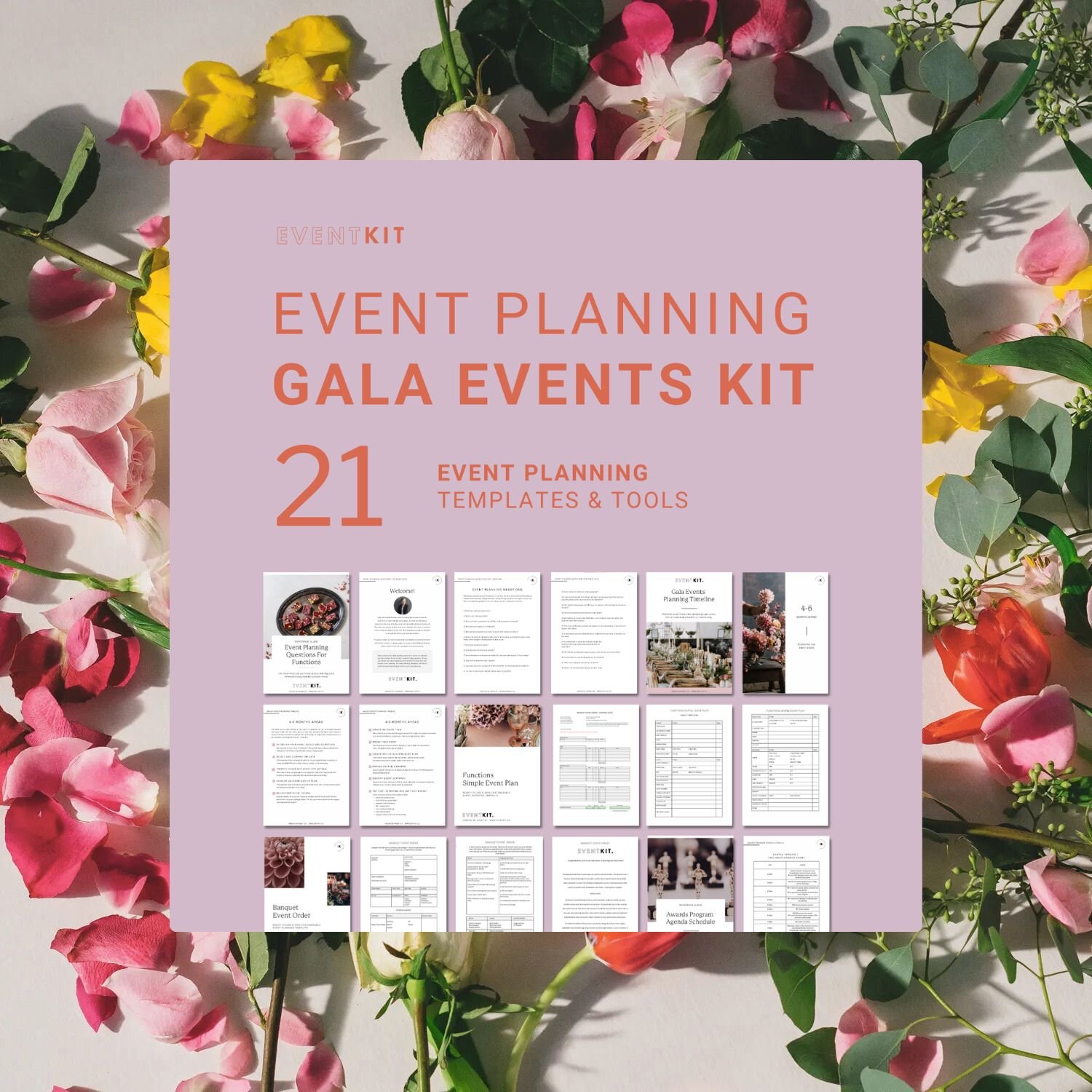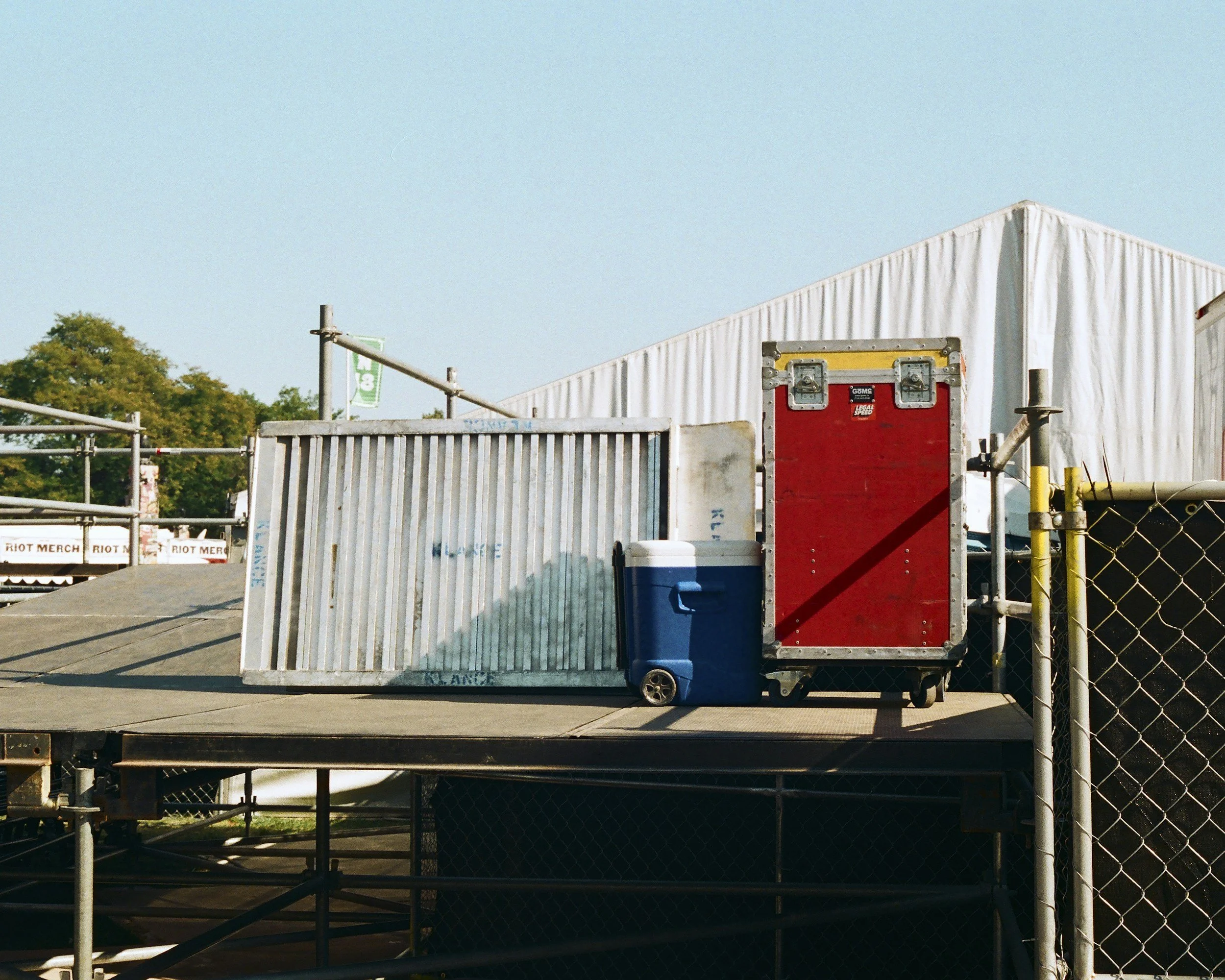Step-by-Step Guide for the Event Run Sheet Template
Event days can be busy, messy, and full of moving parts.
The right run sheet brings it all together.
The Event Kit Run Sheet Template is designed to give you a clear, minute-by-minute plan so nothing slips through the cracks.
Instead of juggling sticky notes and scattered emails, you’ll have one central document that keeps your team, suppliers, and stakeholders on the same page.
This guide shows you how to fill in, customise, and share your run sheet so it works for any event, big or small. It’s built for new and experienced planners who want clarity, confidence, and a smooth event day from start to finish.
Looking for a free sample run sheet template?
What is an Event Run Sheet?
If you want a streamlined flow from bump-in to bump-out, you’re in the right place. Here’s our simple 5-step method for using a run sheet to take control of your event day.
And the good news: it works even if you’re brand new to events and have never used one before.
Used by event managers worldwide, a run sheet (also called a Production Schedule, Run of Show, or Event Schedule) lists every activity, task, and contact detail needed for event day. Without it, even small slips can snowball into major issues. With it, you’ll:
Coordinate activity from start to finish
Plot tasks quickly and easily
Share a clear schedule with your team
Plan across multiple days and venues
Keep essential contacts at hand
Step 1: Download Free Event Run Sheet Template
New planners often open a blank Excel file and wonder where to start. That’s why many first-time events run into chaos — they skip the simple shortcut.
Before you do anything else, grab your free copy from our Freebies. It will save you hours of formatting and guesswork.
Step 2: Add Event Details
Next, fill in your basics: event name, date, location, and manager contact details.
Here are the top 3 mistakes I see people make at this stage — and how to avoid them:
Mistake 1: Not checking details are accurate.
✷ Always double-check before event day.
Mistake 2: Adding too much information.
✷ Use short sentences and only the essentials.
Mistake 3: Forgetting to consult the team.
✷ Schedule a review with your key players so the details and timings make sense for everyone.
Step 3: Add Event Tasks & Activity
Now it’s time to map out your day in order. List your bump-in, main event, and pack-down tasks in one line each, with start times and locations.
Pro tip from experience: don’t assume your suppliers magically know your schedule. I once listed times without confirming availability, and the result was a messy, stressful day. Learn from my mistake, always check.
How to add event items to the run sheet:
List one key event task or activity per line
Sort your tasks and activities in chronological order the start time
Note the location of the tasks or activity (e.g. Main Stage, FOH, BOH)
Always use short, clear wording. It should be easily skimmable.
Step 4: Add Key Contacts & Notes
The run sheet template has columns for Lead, Contact, and Notes. Don’t skip them — they’re the glue that holds the schedule together.
Lead: The person or company responsible (choose what works best for your team).
Contact: The on-day name and phone number for that supplier or team member.
Notes: Any reminders, booking details, or specifics that could save stress later.
We’ve included sample items in the template to show how our team uses these fields in practice.
Step 5: Share with Your Team
Finally, share your run sheet with everyone involved: staff, volunteers, suppliers, contractors. A clear schedule is only useful if it’s in the right hands.
Before sending, review:
Is every task scheduled accurately?
Are contact details correct?
Do the timings flow logically with supplier bookings?
Then email it out or share via your preferred cloud platform. Print copies if needed — it’s still the fastest way for some crew members to follow along.
👉 Ready for more pro templates and tools? Explore the full Event Kit Shop →
Want more practical event planning tips? Bookmark these extra guides.
How to Build an Event Day Timeline
Leveraging ChatGPT in Event Planning: New Ways to Creativity & Efficiency
Final Thought: Keep it Simple
The best run sheets aren’t the longest or most detailed, they’re the clearest.
A run sheet is not about impressing anyone with pages of information, it’s about making sure your team can read it quickly, understand it instantly, and act on it without hesitation. Keep your entries short, use plain language, and focus only on what will matter on event day.
If you find yourself overcomplicating it, take a step back.
Ask yourself: Will this note help someone take the right action at the right time? If the answer is no, leave it out. A simple, well-structured run sheet will always outperform a cluttered one.
Remember, your run sheet is a working tool, not a glossy report. It should live in the hands of your crew, not sit in a folder gathering dust. Keep it practical, keep it readable, and trust that clarity will carry your event from bump-in to bump-out without the unnecessary stress.
You Might Also Like
Meet Your Mentor
Hi, I’m Rachella — founder of Event Kit, and an Event Consultant with 25+ years of experience running world-class festivals and public events. I started Event Kit because I knew there had to be a better way. These are the tools and tips I wish I’d had when I was starting out, and now I’m sharing them with you.
EVENT KIT LIBRARY
Guides & Tutorials: Expert Insights & Event Planning Inspiration
Your go-to for practical event planning advice, from beginner basics to smart professional development.





















